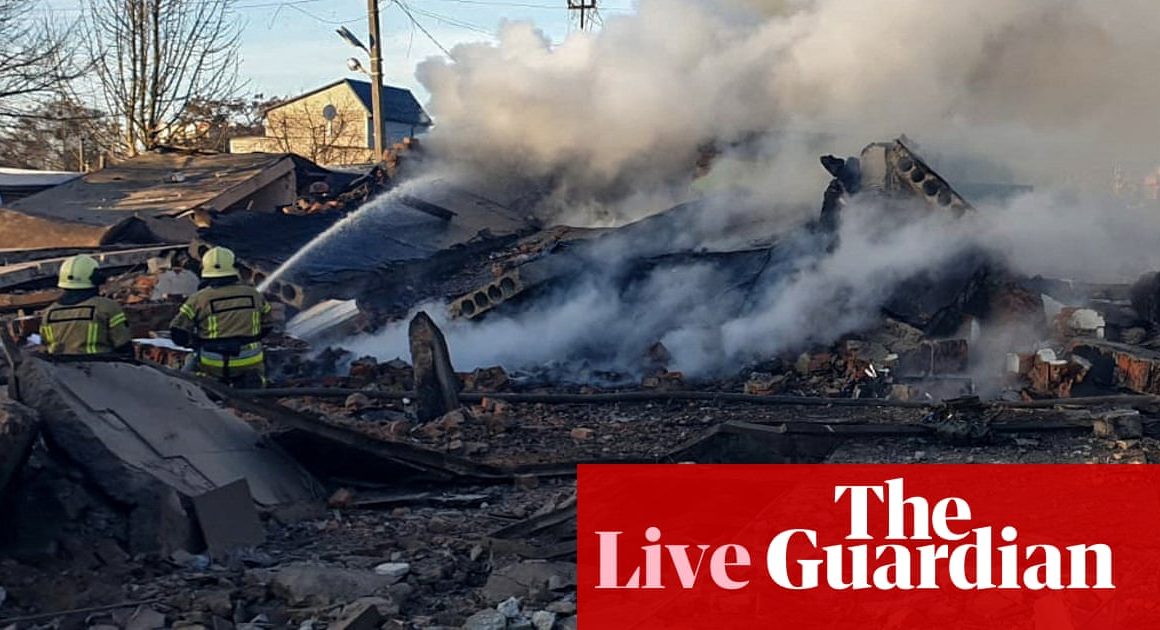Last summer, thousands of Russian soldiers armed with heavy weaponry started going the “wrong” way up the road from eastern Ukraine to Moscow. The military leader Yevgeny Prigozhin had decided to revolt, turning Vladimir Putin’s own fighters against him. For a brief moment, it appeared as though the regime might collapse. The challenge was so serious that forces loyal to Putin built fortifications on the outskirts of the capital while armoured vehicles patrolled the city. When the Russian air force attempted to stop the rebels’ advance, Prigozhin’s men downed several helicopters and an aeroplane.
Less than 24 hours later, the mutiny was over. Two months later, Prigozhin was dead. And instead of losing his office, freedom, or life, Putin continues to rule from his palace, seemingly more entrenched than ever. The price for his survival is paid by the Russians he subjugates and the Ukrainians he kills.
Many other dictators haven’t had his luck. Former Tunisian president Ben Ali was forced into exile. Nicolae Ceaușescu, who ruled Romania for more than two decades, was executed. So what determines whether a tyrant stays in power or gets booted out?
Every day, dictators wake up and worry about the people who want to kill them. From the outside, they may appear immovable, running their country with an iron grip. But on the inside, these regimes are engaged in a constant battle against fragility, because they have enemies everywhere – and everything can shatter in an instant.
What it boils down to is this: to stay in power, tyrants must keep the people with the money – elites – and the men with guns – generals – on side. Putin may have lost control of Prigozhin, but he maintained the loyalty of the elites and the generals, which is why he’s still around. When crisis came, Prigozhin couldn’t peel off key powerbrokers. If he had, it would have been Putin, not Prigozhin, meeting an untimely death. But as the Wagner group leader learned, taking on a dictator from the inside is the biggest gamble possible. When you lose, you lose everything.
The ongoing problem for Putin, and for other dictators, is that they are never truly safe. Paying off elites and buying the loyalty of generals is expensive – and often requires strategies that alienate the rest of the population. As a result, the disgruntled masses may rise up. And when that happens, as it did in Tunisia in 2011 and Romania in 1989, it can all be over in the blink of an eye.
Tunisians and Romanians understood something crucial: to get rid of a dictator, you need to split the regime. When the streets are full of people and the tyrant issues an order to open fire, the loyalists have a decision to make: will they follow through and kill their own, or will they refuse? Using lethal force against unarmed civilians might create a backlash, leading to an unstoppable uprising. At the same time, a disobeyed order clearly signals a divided and weak regime. Under those circumstances, key figures may reconsider their position. Everyone wants to be on the winning side.
When it comes to toppling tyrants, power and proximity matter. In the case of Russia, the head of the National Guard has more leverage than a civil servant in the capital – and that bureaucrat has more influence than a shopkeeper in Yekaterinburg or the Russian Far East. Foreign governments have limited influence, but can help by weakening the dictator, strengthening the masses and making life miserable for the powerbrokers who keep the system running, while giving them an opportunity to escape.
That means broad sanctions that deprive the tyrant of opportunities to redistribute money to elites and generals, and measures that make it harder to access weaponry that can be used to suppress protesters or surveillance software to control opponents. If revolutionaries need a place to organise abroad, it should be provided. Regime insiders should be encouraged to defect and offered money and safety if they do so. Dissidents then need to build a broad coalition and take to the streets. If they manage to mobilise, especially in the capital and other major cities, there is every chance that the system will crack.
Unfortunately, that approach is unlikely to work in the world’s most entrenched and destructive regimes such as Putin’s Russia, Kim Jong-un’s North Korea or Xi Jinping’s China. In these countries, popular mobilisation is all but impossible. Even if a large number of Russians, North Koreans or Chinese wanted to remove their leaders, there’s almost no way to organise large demonstrations. And if there was, there would be no guarantee that the dictatorships would crumble. They might resort to mass violence in response, resulting in a bloodbath but no change.
after newsletter promotion
For outsiders, then, there are two options: use violence or bide your time, ensuring that you are prepared for the day when the dictator makes a mistake that can be exploited. Violence, whether out in the open or covert, is rarely an attractive proposition, because its effects can be counterproductive or outright devastating. Democracies are seldom born from the barrel of a foreign gun. But all tyrants blunder – partly because they are human and partly because they operate in a system in which bad news is often withheld from them: nobody wants to be the messenger who gets shot. If you are patient, they often falter all by themselves. And when they do, well-executed foreign pressure and support can make the difference, turning a struggling despot into a former dictator.
The 21st century will largely be defined as a showdown between dictatorships and democracies. Right now, the dictatorships look strong. But people everywhere deserve a say in the way they are governed. Whenever possible, democracies should support the brave citizens attempting to resist oppression – and use the tools that they have at their disposal to squeeze dictatorships so that they are more likely to buckle under the strain. Despite appearances, it is often only a matter of time before tyrants – and the statues they erect for themselves – fall.
Marcel Dirsus is a political scientist and author of How Tyrants Fall published by John Murray (£22). To support the Guardian and Observer, order your copy at guardianbookshop.com. Delivery charges may apply.
Further reading
Autocracy, Inc: The Dictators Who Want to Run the World by Anne Applebaum (Allen Lane, £20)
The Age of the Strongman: How the Cult of the Leader Threatens Democracy Around the World by Gideon Rachman (Vintage, £10.99)
How to Stand Up to a Dictator by Maria Ressa (WH Allen, £10.99)











